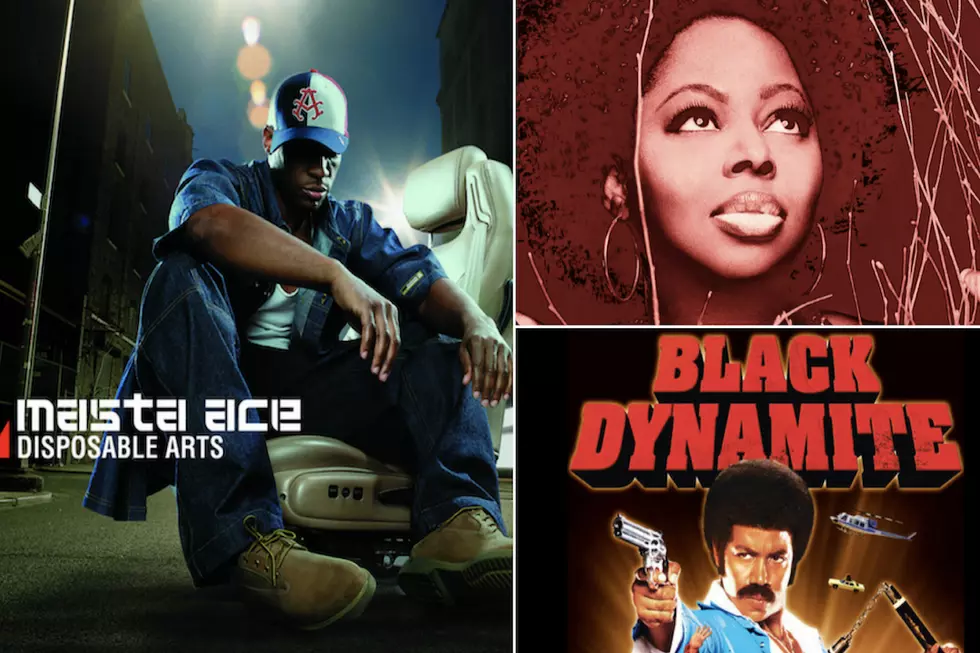
‘The World Cup of Hip-Hop: Take Back the Mic’ Offers a Unique Look at Global Hip-Hop
The World Cup of Hip Hop: Take Back The Mic has become one of the world's most inspired and inspiring movements dedicated to hip-hop culture. The show launched in 2015, an innovative digital series that lets fans help to choose the best hip-hop artists from around the world--with the 3 top-scoring artists from each country actually going on to star in the series. It's helped elevate global hip-hop, with submissions coming from varied locations--including Brazil, Colombia, the Dominican Republic, Mexico, and the U.S.
With Season 3 looming, we spoke to creator and host Derrick Ashong, as well as Lucia Brawley of amp.it, about the impact of Take Back the Mic and how it has helped connect an entire generation of hip-hop fans.
"Originally, we had the idea years ago," Ashong recalls. "One of my bandmates and I had been traveling overseas and we did this video in Ghana, which is my home country. That video kind of blew up and charted number four in Ghana. It was R. Kelly, Beyonce, Usher and us. As I was going to different countries, and I was noticing that everywhere I went, I would meet emcees. And some of them were absolutely incredible. This one particular night, I was in a cipher in my car, and everyone’s doing their thing and it’s all good. I do my rhyme, freestyle, no problem. Next kid comes up, does a rhyme. Its fine—fantastic. Next thing you know, he flips the script into another language and he freestyles in the second language. And just when your brain is wrapping around it—'waitaminute, this dude is improvising in two different languages'—he flips to a third. And it hit me that ‘Wow, some of the most interesting stuff happening in hip-hop is not in the United States. It’s pretty much invisible to the mainstream scene. So what if you could create a competition where the best voices from around the world could be elevated?"
From Ashong's original idea, a broader vision emerged. But realizing that vision proved to be daunting as networks lacked interest in a series dedicated to hip-hop globally.
"That moment in the cipher was in January of 2005," Ashong says, outlining how long it took to move forward. "I met with a producer from MTV later that year, who wanted to support the project and we went through a whole process in 05 and 06 and into 07. Every network we approached with it said ‘there’s no audience for that. No one will be interested. No one cares about global hip-hop and people don’t want to see something in a language they don’t understand.'”
But Ashong continued to build his resume, working in a variety of capacities throughout media; including al-Jazeera, BET, CNN and even with Oprah. Along the way he garnered an Emmy nomination--and a wealth of experience regarding how to launch a series. By 2013, things began to take shape. And the Miami-based tech startup amp.it began piecing together just how this series would function.
"I realized, we can do this," he says. "So I started to talk to people about creating the show. We’re a tech company and we built a platform that made it possible; young people around the world that identifying amazing creatives in their communities. That’s how we were able to find talent for the show! Literally, we had to think of how to create a show, how to launch a show, how to build a show and we had to build an entire technological ecosystem to enable regular people to identify who speaks to them around the world at the same time."
"I think what really speaks to people is the heart-to-heart connection that happens [on] the show," Brawley explains. "Derrick is an emcee from the developing world himself. He’s really able to connect, heart-to-heart, with the artists. And they just show their true selves; their real lives, with families and friends and communities, and there’s the same line over and over again 'hip hop saved my life.' Or 'hip-hop changed my life' or 'hip-hop is my way of life.' So many of them are trying to turn around uplift others through their music. They found ways to rise up through hip-hop and they want others to do the same. And that is very powerful and resonate and I think anybody can identify with it—even if hip-hop isn’t your thing; that human alchemy of turning poison into medicine through your passion."
"It’s been over a decade from the thought to the reality," says Ashong. "The biggest challenge was overcoming the idea that other people would think this wasn’t a good idea or that this wasn’t meant to be. It’s like if you’re a boxer or martial artist, you don’t just learn how to throw a punch, you have to learn how to take a punch. And we got beat up on this path, but we also got really strong and we figured out what we were capable of. We were capable of much more than people expected."
Take Back the Mic is part travel show, part interactive music competition. It gives the power to the fans, who select the global hip-hop artists from various locales; giving a window into cultures that birthed these remarkable talents. Shot in Brazil, Colombia and Jamaica, the series was crowdfunded in its first season; and added Cuba, the Dominican Republic, Mexico and the USA in its second season. DJ Maseo of De La Soul hosted the Season 2 finale in Miami. Take Back the Mic has found it's legs and it's voice--and it's been elevating artists and fans alike.
"The first season artist that won, we met them in a favela outside of Rio," Ashong shares. "Sixty days later, they were on the cover of a national newspaper. We all looked like 'Oh my god!' The greatest reward has been seeing what it’s doing in the lives of the artists. And the fans truly believe in it. Take Back in the Mic is not something where the artists just win. The last year, we had this finale in Miami Beach. The number one fan was a 14 year old girl from Colombia. Her first time leaving her country was an all expense paid trip to Miami with her dad because she helped us find the top artist last year."
While acknowledging his frustrations regarding the commercialization and commodification of hip-hop in the United States, Ashong and Brawley both believe that the universal spirit in hip-hop culture connects all of these artists and fans--regardless of geography or culture.
"The similarity is hip-hop comes out from the roots--from the streets," says Ashong. "I don’t necessarily mean hip-hop is 'hood.' I mean that the people participating in the culture, for the most part, are people who feel this is one of the few ways of making their voices heard. It’s the voice for the people who otherwise might not have been heard—all around the world. Those things are universal in the movement."
More From TheBoombox









